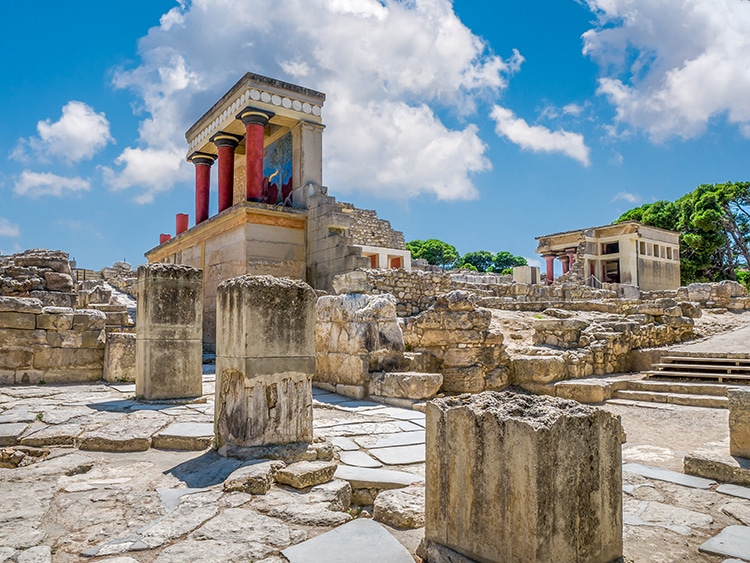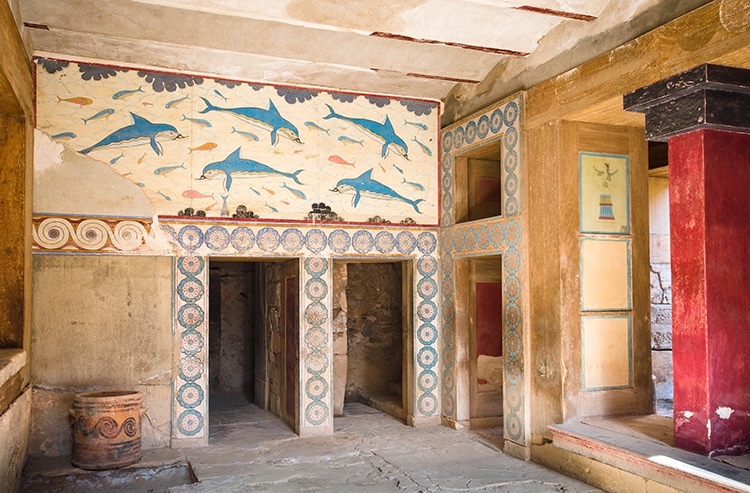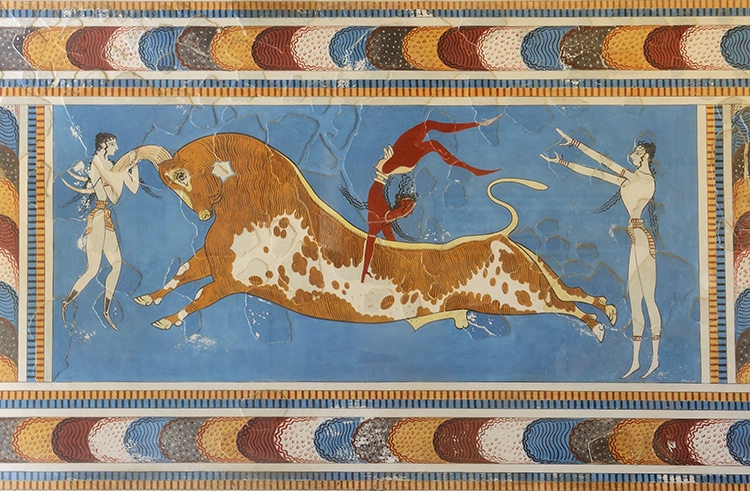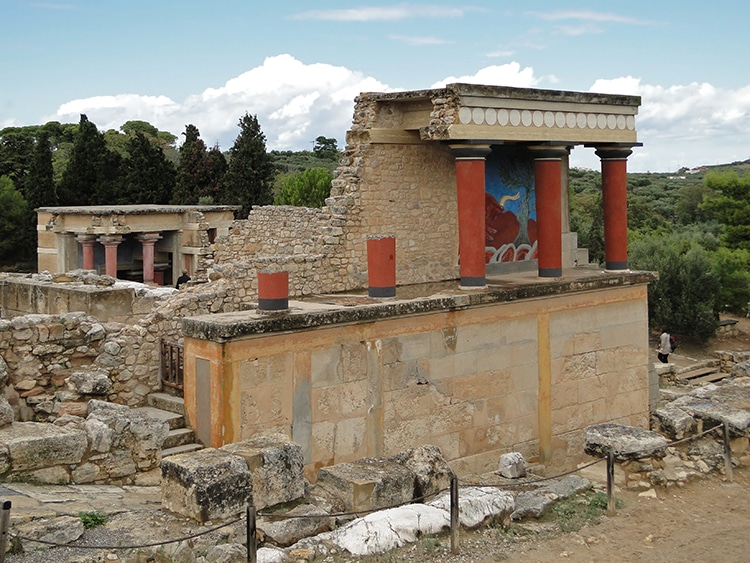Photo:Stock Photosfrom IULIIA_N/Shutterstock
On the island of Crete lies the ruins of an ancient palace.
Now part of modern Greece, Crete was once the center of the Aegean civilization known as theMinoans.
The Minoans are commonly described as the first complex civilization of Europe.

Photo:Stock Photosfrom IULIIA_N/Shutterstock
Nowhere is the glory of Minoan culture so on display as atKnossosaroyal palacenearby the port of Heraklion, Crete.
The firstpalace of Knossoswas constructed around 2000 BCE.
It was later destroyed in an earthquake around 1720 BCE.

The throne room at Knossos, featuring frescoed walls. (Photo:Stock Photosfrom ANTON CHYGAREV/Shutterstock)
The rebuilt palace is what remains todaya complex of frescoed rooms, magnificent columns, and zig-zagging stairs.
The palace served as the administrative and ceremonial headquarters of the Minoan realms.
The palace was built to handle a large population.

The famous dolphin fresco. (Photo:Stock Photosfrom GEORGIOS TSICHLIS/Shutterstock)
Basement storage allowed for hoarding wheat, oil, and treasure.
Artisans worked in quarters nearby to meet the needs of the residents.
The throne room at Knossos, featuring frescoed walls.

A bull-leaping scene shown in a (restored) fresco. (Photo:Stock Photosfrom PECOLD/Shutterstock)
The king sat in a gypsum stone throne which is still on view today at the site.
The room also includes a stone bowl which may have been used in religious rituals.
The frescos along the walls of the room depict griffins.

An artist’s reconstruction of the Knossos Palace. (Photo: Mmoyaq viaWikimedia Commons,CC BY-SA 3.0)
A famous dolphin fresco is evidence of the importance of marine life to the coastal palace.
Another fresco depicts a scene thought to be purposeful bull leaping.
Acrobats would literally leap bullsdefying dangerin what may have been part of religious rituals centered around the bovines.

The north portico of Knossos. (Photo: Bernard Gagnon viaWikimedia Commons,CC BY-SA 3.0)
The famous dolphin fresco.
(Photo:Stock Photosfrom GEORGIOS TSICHLIS/Shutterstock)
A bull-leaping scene shown in a (restored) fresco.
The ruins were discovered thousands of years later in 1878 by Minos Kalokairinos.

The sewers of the Bronze Age palace. (Photo:Wikimedia Commons, Public domain)
The site was later excavated by British archeologist Sir Arthur Evans in the first decades of the 20th century.
Today, Knossos can be visited by travelers and history buffs.
Along with other Minoan palaces, Knossos is currently on thetentative listfor UNESCO World Heritage Sites.

Knossos' Royal Road on Crete, Greece. (Photo: Harrieta171 viaWikimedia Commons,CC BY-SA 3.0)
See more renderings and photos from the ancient Knossosa royal palace on the island of Crete.
An artist’s reconstruction of the Knossos Palace.
(Photo: Mmoyaq viaWikimedia Commons,CC BY-SA 3.0)
The north portico of Knossos.
(Photo: Bernard Gagnon viaWikimedia Commons,CC BY-SA 3.0)
The sewers of the Bronze Age palace.
(Photo:Wikimedia Commons, Public domain)
Knossos' Royal Road on Crete, Greece.